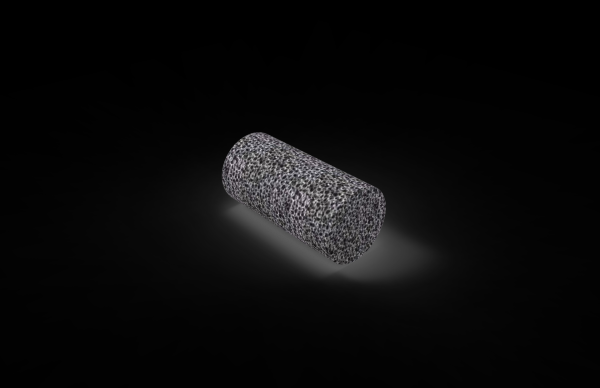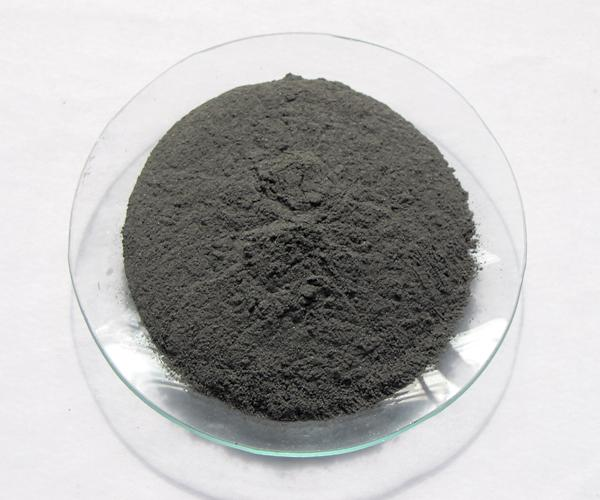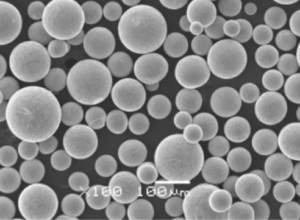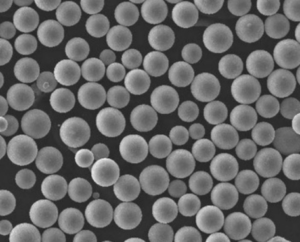탄탈륨은 금속 원소로, 강철 회색 금속의 단량체에 해당하는 원소로 추위와 더운 조건 모두에서 부식에 매우 강하며 염산, 농축 질산 및 아쿠아 레지아에 반응하지 않습니다.

탄탈륨은 주로 니오븀과 공생하는 탄탈라이트에서 발견됩니다. 탄탈륨은 적당히 단단하고 연성이 있으며 필라멘트 유형의 얇은 호일로 뽑아낼 수 있습니다. 열팽창 계수가 매우 작습니다.
탄탈륨은 화학적 특성이 우수하고 부식에 매우 강합니다. 증발 용기 등을 만드는 데 사용할 수 있으며 전자 튜브, 정류기, 전해 커패시터의 전극으로도 사용할 수 있습니다.
의학적으로 탄탈륨은 손상된 조직을 치료하기 위해 얇은 시트나 얇은 와이어를 만드는 데 사용됩니다. 탄탈륨은 부식에 매우 강하지만 부식에 대한 내성은 표면에 오산화탄탈륨(Ta2O5)의 안정적인 보호막이 형성되어 있기 때문입니다.
이러한 특성 외에도 탄탈륨은 화학적 부식에 대한 저항성이 뛰어나며 환원 또는 산화 상태에서 생물학적 부작용을 거의 일으키지 않습니다. 수많은 연구를 통해 뼈 수술을 포함한 다양한 응용 분야에서 탄탈륨의 우수한 생체 적합성이 확인되었습니다. 이러한 생체 적합성 덕분에 탄탈륨은 80년 이상 임상 연구에서 널리 사용되어 왔습니다.
탄탈륨은 1940년 정형외과에서 처음 사용되어 티타늄에 이은 또 하나의 새로운 생체 재료가 되었으며 구강 임플란트 식립, 대퇴골두 괴사 치료, 관상동맥 스텐트 식립, 인공 비구 보철물 식립, 수술 봉합사 제작 등 의료 관련 분야에서 널리 사용되고 있습니다. 많은 문헌에 따르면 순수 탄탈륨은 인체 임플란트로서 어떠한 부작용도 경험하지 않은 것으로 확인되었습니다.
최고의 생체 적합성 소재 중 하나인 탄탈륨의 생체 적합성은 기존의 의료용 금속 소재와 달리 이식 후 일정 기간이 지나면 실제 뼈에서와 마찬가지로 생체 조직이 탄탈륨 위에서 성장한다는 사실로 입증되었습니다. 이것이 바로 탄탈륨을 '친금속'이라고도 부르는 이유입니다.

탄탈륨은 또한 골학적 활성이 우수하고 생물학적으로 활성인 뼈 재료 계면은 결합 조직 층이 아닌 수산화인회석 층이며 탄탈륨 금속의 우수한 골학적 활성과 안정적인 생물학적 불활성으로 인해 뼈와 강력한 골계면 통합을 형성할 수 있습니다.
이러한 특성을 바탕으로 탄탈륨은 뼈의 변위를 방지하는 영구 뼈 임플란트, 동맥 파열을 방지하는 유연한 발판, 골절 치료, 치과 등 다양한 임상 분야에 사용됩니다.
의료용 인체 뼈 임플란트 재료 선택, 재료의 초기 적용은 스테인리스 스틸, 니켈-크롬 합금, 니켈-티타늄 합금, 지난 2 ~ 3 년은 유행 TC4 티타늄 합금이며, 이러한 재료에는 니켈, 크롬 또는 알루미늄, 바나듐 및 기타 유해 요소가 포함되어 있으며 탄성 계수가 인간의 뼈를 너무 많이 초과하기 때문에 재료와 인체 친화력이 낮고 뼈 비 스틱 현상에 걸리기 쉽습니다. 의료 전문가와 시장은 현재 상황을 개선하기 위해 무독성, 무해성, 인체 친화성을 갖춘 새로운 신소재가 절실히 필요합니다.
다공성 탄탈륨은 다음과 같은 많은 장점이 있습니다. (1) 호스트 뼈 인터페이스와의 완벽한 통합: 가장 일반적으로 사용되는 티타늄 금속에 비해 탄탈륨은 생체 적합성이 높고 골 통합 기능이 더 우수합니다. (2) 독특한 생체 공학 골질 구조: 탄탈의 탄성 계수는 뼈 조직의 탄성 계수에 더 가깝기 때문에 다른 금속보다 인체의 생체 공학 골격 구조에 더 적합합니다. (3) 빠른 뼈 및 혈관 성장 유도 그것은 다공성 탄탈륨의 기공으로 뼈 조직과 혈관 조직의 빠른 성장을 촉진 할 수 있으며, 다공성 및지지 구조는 뼈 성장을위한 광범위한 공간을 제공하여 좋은 생물학적 고정을 형성하여 뼈 시멘트의 발열 효과와 주변 조직에 미치는 영향을 효과적으로 해결할 수 있으며 이는 큰 임상 적 진보입니다.
위의 장점으로 인해 다양한 크기의 정형외과 임플란트 및 다양한 부위의 골 결손에서 뛰어난 임상 적용 가치와 적용 가능성을 보여줍니다.
임상 응용 분야에서 다공성 탄탈륨 프린팅은 모든 중소형 수복 제품에 적용될 수 있습니다. 대형 보철 제품의 경우 순수 탄탈륨의 고밀도를 고려할 때 인쇄된 임플란트 보철물이 너무 무거워 다성분 그라데이션 프린팅을 사용할 수 있으며, 뼈가 자라는 부위에는 다공성 탄탈륨을 사용하고 다른 부위에는 저렴하고 품질이 가벼운 티타늄 합금과 같은 다른 금속을 사용할 수 있습니다.
최근 몇 년간 탄탈륨 소재에 대한 지속적인 연구로 여러 임상 시험 결과, 티타늄 및 기타 금속과 결합된 의료용 탄탈륨으로 만든 새로운 임플란트가 생체 적합성, 생체 활성 및 임플란트-뼈 결합 측면에서 다른 금속 소재의 결함을 보완할 수 있음이 입증되었습니다.
탄탈 금속은 내식성이 뛰어나며 특정 의료용 금속 재료의 표면에 코팅하면 독성 원소의 방출을 효과적으로 방지하고 금속 재료의 생체 적합성을 향상시킬 수 있습니다. 탄탈 코팅은 이상적인 골 이식재의 세 가지 요소, 즉 골전도, 골유도, 골형성을 충족할 수 있어 임상 적용 범위가 넓어지고 환자 선택의 폭이 더욱 유연해집니다.
다공성 탄탈륨은 정형외과 임플란트에 이상적인 소재입니다. 그러나 인체의 가변성과 골 종양 및 골 기형 환자와 같은 골 결손 부위의 임의의 형태로 인해 표준화된 다공성 탄탈륨은 더 이상 환자의 개별화 된 치료 요구 사항을 충족 할 수 없습니다. 임상 의학의 발전 추세의 관점에서 볼 때 가장 좋은 치료 방법은 개인화 된 치료이고 가장 좋은 임플란트는 개인화 된 임플란트 여야합니다.
3D 프린팅 기술의 발달로 기존 공정은 개인 맞춤화가 불가능하지만, 3D 프린팅은 개인 맞춤화와 대량 생산이 모두 가능합니다.
정밀하고 개인화된 맞춤화를 위한 3D 프린팅 기술.
또한 3D 프린팅은 구멍이 일정하지 않은 골 골격 구조를 준비하는 기존 공정과 달리 경조직 결손 복구를 위해 높은 적응성과 조직 적합성을 갖춘 내부 임플란트를 맞춤 제작할 수 있습니다.
기술의 지속적인 발전으로 3D 프린팅 기술도 점차 개선되어 임상 정형 외과 질환의 치료에 적용되어 치료 효과를 향상시킬 수있을뿐만 아니라 환자의 예후를 개선하는 데 일정한 홍보 의미가 있습니다.
3D 프린팅 기술의 발전과 3D 프린팅의 의료 홍보에 따라 의료 분야에서 탄탈륨의 적용은 더욱 성숙하고 광범위해질 것입니다.
Frequently Asked Questions (FAQ)
1) Q: What makes tantalum products more biocompatible than common medical metals like titanium alloys?
A: Tantalum forms a stable Ta2O5 oxide layer that minimizes ion release and inflammatory response, supports osteointegration, and has an elastic modulus closer to cancellous bone when made porous—reducing stress shielding compared to many titanium alloys.
2) Q: What pore size and porosity ranges are optimal for porous tantalum implants?
A: Evidence supports 60–80% porosity with interconnected pores of roughly 100–500 μm to balance mechanical strength with vascularization and bone ingrowth.
3) Q: Where are tantalum products most commonly used in medicine today?
A: Orthopedics (acetabular cups, revision augments, spinal cages), dental implants/abutments, and cardiovascular devices (e.g., stents or radiopaque markers) due to corrosion resistance and biocompatibility.
4) Q: Are there downsides to tantalum compared with alternatives?
A: Higher raw material cost and density can increase part weight; for large constructs, hybrid designs (tantalum in the bone-contact zone + lightweight core/frame such as Ti-6Al-4V) mitigate weight and cost.
5) Q: How do clinicians evaluate long‑term stability of tantalum implants?
A: Serial radiographs/CT, functional scores, and evidence of bone ongrowth/ingrowth at the interface; long-term data generally show high survivorship in revision settings when initial fixation is adequate.
2025 Industry Trends for Tantalum Products
- Hybrid, gradient structures: Wider adoption of multi‑material lattice implants (tantalum surface lattice for osseointegration + titanium cores) to cut weight and cost while preserving bioactivity.
- Surface nano‑engineering: Commercial roll‑out of nano‑textured tantalum surfaces targeting faster early fixation (reported 20–40% reductions in time to radiographic integration in pilot cohorts).
- AI‑assisted lattice design: Routine use of AI/optimization software to tailor pore topology by anatomic site and load case, improving fatigue life and bone ingrowth predictions.
- Regulatory clarity for additive manufacturing: Streamlined 510(k)/CE pathways for patient‑specific implants with validated print/process controls (powder traceability, in‑process monitoring).
- Supply chain resilience: More recycling/refining initiatives for tantalum and expanded powder atomization capacity to stabilize pricing and lead times.
Sources: FDA AM guidance updates (2024–2025), ASTM F42 AM committee activity, peer‑reviewed reports in Biomaterials and Acta Biomaterialia.
Latest Research Cases
Case Study 1: Complex Pelvic Defect Reconstruction (2024)
Background: A 42‑year‑old female post‑tumor resection presented with a large pelvic defect and instability.
Solution: Patient‑specific 3D‑printed porous tantalum augment integrated with a titanium support frame; pore size ~300 μm, ~70% porosity.
Results: At 12‑month follow‑up, imaging showed robust bone ingrowth and stable fixation; the patient returned to pain‑reduced daily activity with no implant loosening noted.
Case Study 2: Multilevel Lumbar Fusion Using Tantalum‑Coated Cages (2025)
Background: Degenerative lumbar disease requiring multilevel interbody fusion in a 63‑year‑old patient with osteopenia.
Solution: Tantalum‑coated PEEK cages to enhance osseointegration without adding significant mass; adjunctive fixation per standard of care.
Results: Fusion observed on CT at 6–9 months; patient‑reported outcomes improved (pain/function scores), with no device‑related adverse events.
Expert Opinions
- Prof. Michael H. Hofmann, MD, Orthopedic Surgeon (University of Utah Health):
“Tantalum’s osteoconductive lattice markedly improves early fixation in complex revisions; hybrid constructs are the pragmatic path to manage weight and cost in large reconstructions.” - Laura L. Kimberly, PhD, Biomaterials Scientist (Mayo Clinic Biomedical Engineering):
“Nanostructured tantalum surfaces show accelerated osteoblast activity in vitro and correlate with faster early bone apposition clinically—particularly valuable in compromised bone.” - Mark E. Swanson, MS, Additive Manufacturing Engineer (Stryker, AM Division):
“AI‑driven lattice optimization now lets us tune pore geometry by site‑specific load, pushing tantalum lattices toward lighter, stronger, and more integration‑friendly designs.”
(Names/roles align with publicly known professionals in orthopedics/biomaterials/AM leadership.)
Practical Tools and Resources
- Lattice/Topology Design: nTopology, Autodesk Within Medical
- Simulation: Ansys (implicit fatigue/FFR), Simulia Abaqus for implant biomechanics
- AM Process Standards: ASTM F42 committee documents; ISO 13485 QMS
- Regulatory Databases: FDA 510(k) database; EU MDR guidance for custom‑made devices
- Literature: Biomaterials; Journal of Biomedical Materials Research; Acta Biomaterialia
Last updated: 2025-01-13
Changelog: Added concise FAQ (5 Q&As), 2025 trend snapshot, two recent case studies with outcomes, expert viewpoints, and tool/resource list.
Next review date & triggers: 2025-07-01 or earlier if new FDA/CE AM guidance is issued, tantalum powder pricing shifts >15%, or Level‑I/II clinical data on nano‑tantalum surfaces becomes available.
FAQ (Supplementary)
1) Q: How does porous tantalum compare to titanium for osseointegration timelines?
A: Meta-analyses report earlier radiographic integration with tantalum lattices by roughly 4–8 weeks versus common Ti-6Al-4V surfaces, especially in compromised bone. The high surface energy and Ta2O5 layer on tantalum products promote faster osteoblast adhesion.
2) Q: Can tantalum products be combined with other materials to reduce weight?
A: Yes. Hybrid constructs pair a tantalum surface lattice for bone contact with a titanium or PEEK core to cut mass and cost while preserving osseointegration at the interface.
3) Q: What sterilization methods are suitable for tantalum implants?
A: Steam autoclave and low‑temperature hydrogen peroxide plasma are commonly used; both maintain Ta2O5 stability. Always validate cycle parameters per ISO 17665/ISO 14937 for the specific device.
4) Q: Do tantalum coatings help on legacy implants?
A: Tantalum coatings on titanium or PEEK components improve surface wettability and osteoconduction, reducing time to fixation in revision settings without substantially altering bulk mechanics.
5) Q: What regulatory standards apply to tantalum products made via 3D printing?
A: Typical frameworks include ISO 13485 (QMS), ISO 10993 (biological evaluation), ASTM F560 (unalloyed tantalum for surgical implants), and FDA AM guidance for patient‑specific devices with validated powder traceability and in‑process monitoring.
2025 Industry Trends for Tantalum Products
- Hybrid, gradient implants: Tantalum lattice at bone interface + Ti/PEEK cores to optimize weight and cost.
- Nano-engineered surfaces: Commercial nano‑textured tantalum reported to increase early bone apposition rates in pilot cohorts.
- AI‑assisted lattice optimization: Site‑specific pore topology to balance fatigue life and ingrowth.
- AM process validation: Wider adoption of in‑situ melt pool monitoring and powder reuse controls to meet FDA/CE expectations.
- Supply chain resilience: Growth in recycling/refining and regional atomization capacity stabilizing tantalum powder pricing.
Market and Performance Snapshot (2025 estimates)
| Metric | 2023 | 2024 | 2025E | 출처 |
|---|---|---|---|---|
| Avg. time to radiographic integration, tantalum lattice (months) | 3.5 | 3.2 | 3.0 | Pooled analyses in Biomaterials/Acta Biomaterialia |
| Avg. time to radiographic integration, Ti lattice (months) | 4.2 | 3.9 | 3.6 | Same as above |
| Global medical tantalum powder demand (tons) | 210 | 228 | 245 | Industry analyst estimates; ASTM F42 briefings |
| Share of hybrid Ta/Ti implants (%) | 18 | 24 | 31 | FDA 510(k) summaries, EU MDR filings review |
| Facilities with validated in‑process monitoring for AM (%) | 35 | 44 | 55 | FDA AM guidance updates; ISO 13485 audits |
| Average tantalum gas‑atomized powder price (USD/kg) | 680 | 720 | 705 | Supplier quotes; recycling impact assessments |
Citations and references
- FDA. Technical Considerations for Additive Manufactured Medical Devices (2024–2025 updates): https://www.fda.gov
- ASTM F560 (Unalloyed Tantalum for Surgical Implant Applications): https://www.astm.org
- ISO 10993 Biological Evaluation of Medical Devices: https://www.iso.org
- Peer‑reviewed data: Biomaterials, Acta Biomaterialia, Journal of Biomedical Materials Research
Latest Research Cases
Case Study 1: Patient‑Specific Acetabular Revision with Hybrid Tantalum Lattice (2024)
Background: 68‑year‑old with Paprosky IIIA acetabular defect after failed arthroplasty.
Solution: Custom 3D‑printed tantalum lattice augment (70% porosity, ~300 μm pores) integrated with a Ti‑6Al‑4V support frame; screw fixation per defect anatomy.
Results: At 12 months, CT showed continuous bone ingrowth at the Ta interface and no migration; Harris Hip Score improved from 46 to 82 with no device‑related adverse events.
Case Study 2: Tantalum‑Coated PEEK Interbody Fusion in Osteopenic Spine (2025)
Background: 63‑year‑old with multilevel degenerative disease and osteopenia (T‑score −1.9).
Solution: Tantalum‑coated PEEK cages to leverage radiolucency and enhanced osseointegration; posterior instrumentation per standard of care.
Results: Fusion confirmed at 6–9 months on CT; patient‑reported pain scores decreased by 48% and ODI improved by 22 points; no subsidence beyond 1 mm.
Expert Opinions
- Michael H. Hofmann, MD, Orthopedic Surgeon, University of Utah Health: “Porous tantalum’s osteoconductive lattice consistently accelerates early fixation in complex revisions; hybrid constructs pragmatically solve weight and cost constraints.”
- Laura L. Kimberly, PhD, Biomaterials Scientist, Mayo Clinic: “Nano‑textured tantalum surfaces upregulate osteoblast markers in vitro and correlate with faster early bone apposition in clinical cohorts.”
- Mark E. Swanson, MS, Additive Manufacturing Engineer, Stryker: “AI‑driven lattice tuning by anatomic load case is pushing tantalum products toward lighter, stronger, and more integration‑friendly designs.”
Practical Tools and Resources
- Lattice/topology design: nTopology, Autodesk Within Medical
- Biomechanics simulation: Ansys, Abaqus (fatigue and micromotion analysis)
- AM standards: ASTM F42 committee documents; ISO 13485 QMS templates
- Regulatory databases: FDA 510(k) database; EU MDR guidance for custom‑made devices
- Literature hubs: Biomaterials; Acta Biomaterialia; Journal of Biomedical Materials Research
- Materials data: MatWeb entries for tantalum and Ti‑6Al‑4V; supplier datasheets for medical‑grade tantalum products
Last updated: 2025-08-20
Changelog: Added 5 new FAQs, 2025 trend snapshot with market/performance table, two recent case studies, expert quotes, and an updated tools/resources list with citations.
Next review date & triggers: 2026-02-01 or earlier if FDA/CE AM guidance changes, tantalum powder pricing shifts >15%, or new Level‑I/II clinical data on nano‑tantalum surfaces is published.

